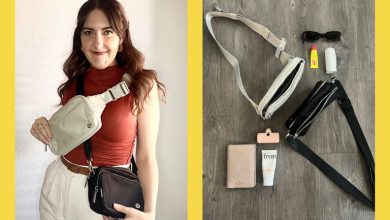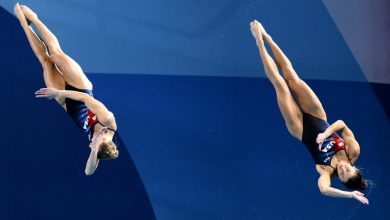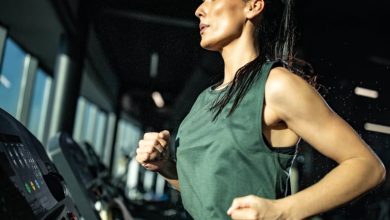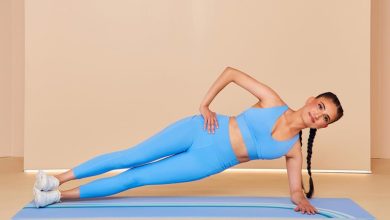We Asked 12 Pilates Instructors For the Best Ab Moves — Here’s What They Said
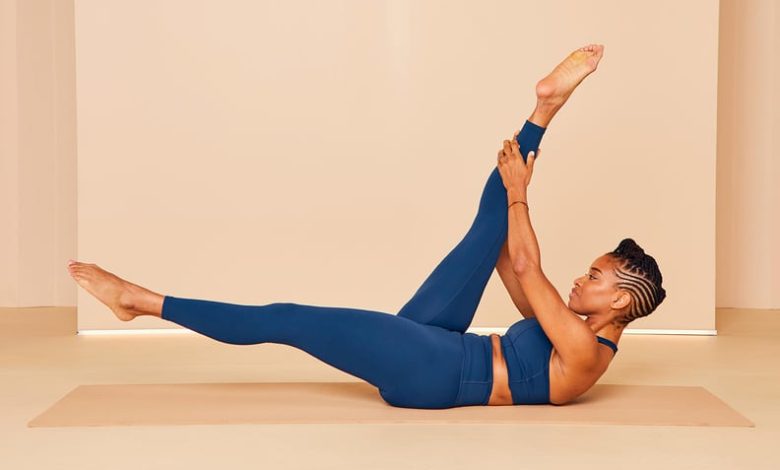
There’s a reason everyone, from celebs and TikTokers to fitness editors, is into Pilates right now. This low-impact workout modality combines flexibility, strength, and endurance into exercises that can be done either on a mat or using a reformer in class (or at home). And it’s amazing at building core strength. Most Pilates workouts incorporate plenty of core work throughout — often, you’ll flow in and out of poses with a yoga-like emphasis on breath, working your abs with nearly every move. However, if you want to dedicate some time specifically to strengthening your abs (and everything else that makes up your core), you can do a full Pilates ab workout or try a couple of Pilates ab exercises that are sure to get the job done.
If you can’t get to a Pilates studio or you just prefer home workouts, never fear. You can still get in a solid Pilates ab workout with nothing but a mat or space on a comfortable floor. To make it easy, we asked 12 different Pilates instructors for their top ab moves; incorporate a few of these 11 exercises into your next core workout for a slow and steady burn that’ll strengthen your abs, and so much more.
Experts Featured in This Article
Nwando Emejulu is a certified Pilates instructor at New York Pilates.
Julie Erickson is a certified Pilates teacher at Endurance Pilates.
Jennifer Herrera is a Pilates Method-certified teacher who’s certified in mat and reformer Pilates.
Lisa Kaye is a licensed Pilates instructor.
Liz Chen is a mat-certified Pilates instructor.
Mary Badon is a Pilates instructor and the owner of Soma Movement Studio in Connecticut.
Heather Jeffcoat, DPT is a physical therapist and BASI-certified Pilates instructor at Fusion Wellness and Physical Therapy.
Supatra Tovar is a certified Pilates instructor and clinical psychologist.
Kelsey Taylor is a personal trainer and Peak Pilates-certified instructor.
Tracy Green is a certified Pilates and barre instructor at Baptist Health-Milestone Wellness Center in Louisville, KY. Gia Calhoun is a Pilates instructor and former vice president of Pilates Anytime.
Molly Niles Renshaw is a certified Pilates instructor and cofounder of Phoenix Classical Pilates.
“My favorite at-home Pilates abs workout without a machine is, hands down, [doing] planks!” says Nwando Emejulu, a certified Pilates instructor at New York Pilates. “I love to start with a forearm plank.”
- Balance on your forearms and toes with the body in one straight line, elbows directly under your shoulders. (To modify, drop your knees to the floor, maintaining a straight line from shoulders to knees.)
- Engage your core, pulling your abs in and up.
- Hold for 30 seconds.
The next Pilates ab exercise, an elbow plank variation, challenges both your balance and core strength. While you’re lifting your leg, “the rest of the body remains absolutely still, and that is where the majority of the [core] work is — in stability,” says Julie Erickson, a certified Pilates teacher at Endurance Pilates.
- Start in an elbow plank.
- Lift your right foot about six inches off the ground, keeping your pelvis parallel to the floor. Avoid arching your lower back to lift your leg. Hold this position.
- Keeping your body straight and aligned, shift backward from your wrists and your left ankle joints. Shift forward again, and set your right foot down.
- Repeat the lift and shift with your right leg. That’s one rep.
Scissor kicks are “a classic example of how Pilates stretches and strengthens simultaneously,” says Jennifer Herrera, a Pilates Method-certified teacher who’s certified in mat and reformer Pilates. In this Pilates ab exercise, you build core strength by keeping your upper body lifted, Herrera says. “The lower abdominals work as the legs move, and the movement stretches the hamstrings and lower back.”
- Lie on your back with both legs in the air.
- Lift your head and shoulders off the ground. Hold your right ankle as you lower your left leg toward the floor, hovering a few inches off the ground.
- Keep your abs pulled to your spine, and switch legs. That’s one rep.
“By far, my favorite at-home Pilates ab exercises are variations of planks,” says licensed Pilates instructor Lisa Kaye. “They work your entire body and core.” She recommends the slow mountain climber, a move that targets your lower abs with a challenging in-plank crunch.
- Start in a high plank with your shoulders over your wrists.
- Bring your right knee forward toward your chest, pulling your abs to your spine to deepen the ab work, holding the position for two to three seconds.
- Switch legs, returning your right leg to plank and pulling your left leg in toward your chest. That’s one rep.
Mat-certified Pilates instructor Liz Chen recommends this challenging Pilates ab workout move to improve your core stability. If you want to turn it up even more, she says, “do this while raising one leg an inch off the ground, then the other leg.” You can try this Pilates ab exercise in a high or low plank position.
- Start in an elbow plank position.
- Keep your back flat — don’t let your hips droop or lift up. Picture your body as a long straight board, or plank.
- Maintaining this position, pull your body forward, shifting your weight forward onto your toes and forearms.
- With control, shift your weight back to the starting position. That’s one rep.
This Pilates ab exercise teaches you to build core endurance, using your abs to “support your spine against gravity,” says Mary Badon, Stott Pilates instructor and owner of Soma Movement Studio in Connecticut.
- Start in a quadruped position (on your hands and knees) with your wrists directly underneath your shoulders and your knees directly underneath your hips. Your core should be engaged, and your spine should be in a neutral position.
- Inhale and lift your knees one inch off the ground. Be sure to keep your back flat and your abs engaged.
- Exhale and lower your knees to the floor with control. That’s one rep.
- To add intensity, slowly step your feet back into a high plank position, hold, then step them forward again to return to your bear hold, keeping your core engaged throughout.
“This is a great exercise to build endurance in your deepest abdominal muscle, the transverse abdominus,” says Heather Jeffcoat, DPT, a physical therapist and BASI-certified Pilates instructor at Fusion Wellness and Physical Therapy. This muscle supports your posture, she explains.
- Lie on your back with your knees bent and feet flat on the floor. Draw your pelvic muscles up and in and your deep lower abdominal muscle toward your spine.
- Lift one leg at a time, bringing your hips and knees to 90 degrees. Make sure your pelvis is in a neutral position with a slight curve in your lower back (not pressed flat to the floor).
- Hold for as long as you can, building up to two minutes.
- To advance the exercise, lower one foot down to the floor with control, using your core muscles. Touch your toes to the floor, and inhale as you lift back up. Repeat on the other side. That’s one rep.
Bicycle crunches are “wonderful for obliques,” says certified Pilates instructor Supatra Tovar. “I love how this one really hits the obliques and challenges the body’s oppositional strength,” adds Kelsey Taylor, a personal trainer and Peak Pilates-certified instructor. “It also works the deep transverse [abdominis] and pulls everything in and together.”
- Lie flat on the floor with your lower back pressed to the ground (pull your abs down to also target your deep abs). Put your hands behind your head.
- Bring your knees in toward your chest in a tabletop position and lift your shoulder blades off the ground.
- Straighten your right leg out to hover off the floor ground while turning your upper body to the left, bringing your right elbow toward your left knee. Make sure your rib cage is moving and not just your elbows.
- Switch sides and do the same motion on the other side. That’s one rep.
“This [classic Pilates move] is great because it engages your entire core,” says Tracy Green, a certified Pilates and barre instructor at Baptist Health-Milestone Wellness Center in Louisville, KY. “Focus on the percussive breathing here — it’s five sharp, quick breaths in, then five strong, quick exhales. Each breath further engages your abdominals.”
Pilates instructor Gia Calhoun, former vice president of Pilates Anytime, agrees, saying thePilates Hundred is designed to “fire up your core.”
- Start lying on your back with your legs in tabletop position. Engage your deep abs to round your lower spine into the floor.
- Exhale and lift your upper back off the floor, until the bottom tips of your shoulder blades are just touching the floor. Straighten your legs to a 45-degree angle, making sure your low back is staying connected to the floor. Reach your arms toward your feet, about two inches off the floor.
- Pump your arms up and down with a small range of motion, keeping your elbows straight. Inhale for five arm pumps, and exhale for five pumps. That’s one set or cycle. Over time, work your way up to 10 cycles.
Bird dog “is really functional movement, where you’re using your core to stabilize what your limbs are doing,” Green tells PS. It’ll activate and strengthen your abs, which ultimately “[keeps] the rest of you from being hurt or injured,” she says.
- Begin on all fours with your hands directly under your shoulders and your knees directly under your hips.
- Pull your abs into your spine. Keeping your back and pelvis still and stable, reach your left arm forward at shoulder height and your right leg back at hip height. Keep your knee pointed to the floor, try not to rock or rotate your pelvis, and avoid arching your back. Reach through your right heel to engage your glutes and hamstrings.
- Return to the starting position, placing your hand and knee on the floor. Repeat on the other side. That’s one rep.
This is perfect for working your upper and lower abs, Tovar says. You can also think of it as “Pilates in a nutshell,” says Molly Niles Renshaw, certified Pilates instructor and cofounder of Phoenix Classical Pilates. “You feel the deep scoop of your abdominals while reaching your arms and legs away from each other . . . Your core is pulled in and stable while the limbs are working in opposition. This takes strength, control, and coordination — all things Pilates!”
- Start lying on your back with your hips and knees bent to 90 degrees in a tabletop position. Lift your upper back and head off the mat, reaching your fingers toward your toes.
- Lengthen your legs away from your center (at about a 45-degree angle to the floor) as you lower your upper body, reaching your arms overhead. Keep your low back pressing into the floor.
- Bend your legs back into tabletop position as you lift your upper body off the floor and reach your hands toward your toes. That’s one rep.
It’s easy enough to string these trainer-beloved exercises together into a DIY Pilates ab workout circuit you can perform at home. Perform each exercise for 15 to 45 seconds before moving onto the next.
When you’re just starting out, you may want to start at the shorter end of that time range, and rest for 15 to 45 between one or two exercises. But as you grow stronger, you’ll be able to add on time and rest less frequently, creating supersets of two to four exercises instead — or even trying to complete all 11 in one go before taking a break.
You can complete the list of 11 Pilates ab exercises once through, or aim to do two or three rounds for a complete Pilates ab workout circuit. But while some burn is a good thing, avoid pushing yourself too hard — taking rest when you need it will allow you to keep proper form, which can only benefit your fitness.
- Elbow Plank
- Elbow Plank With Leg Lift and Rock
- Pilates Scissor Kicks
- Slow Mountain Climber
- Body Saw
- Bear Hold and Drop
- Tabletop Hold
- Bicycle Crunches
- The Hundred
- Bird Dog
- Double Leg Stretch
Maggie Ryan was an assistant editor at PS. A longtime runner and athlete, Maggie has nearly four years of experience covering topics in the wellness space, specializing in fitness, sports, nutrition, and mental health.
